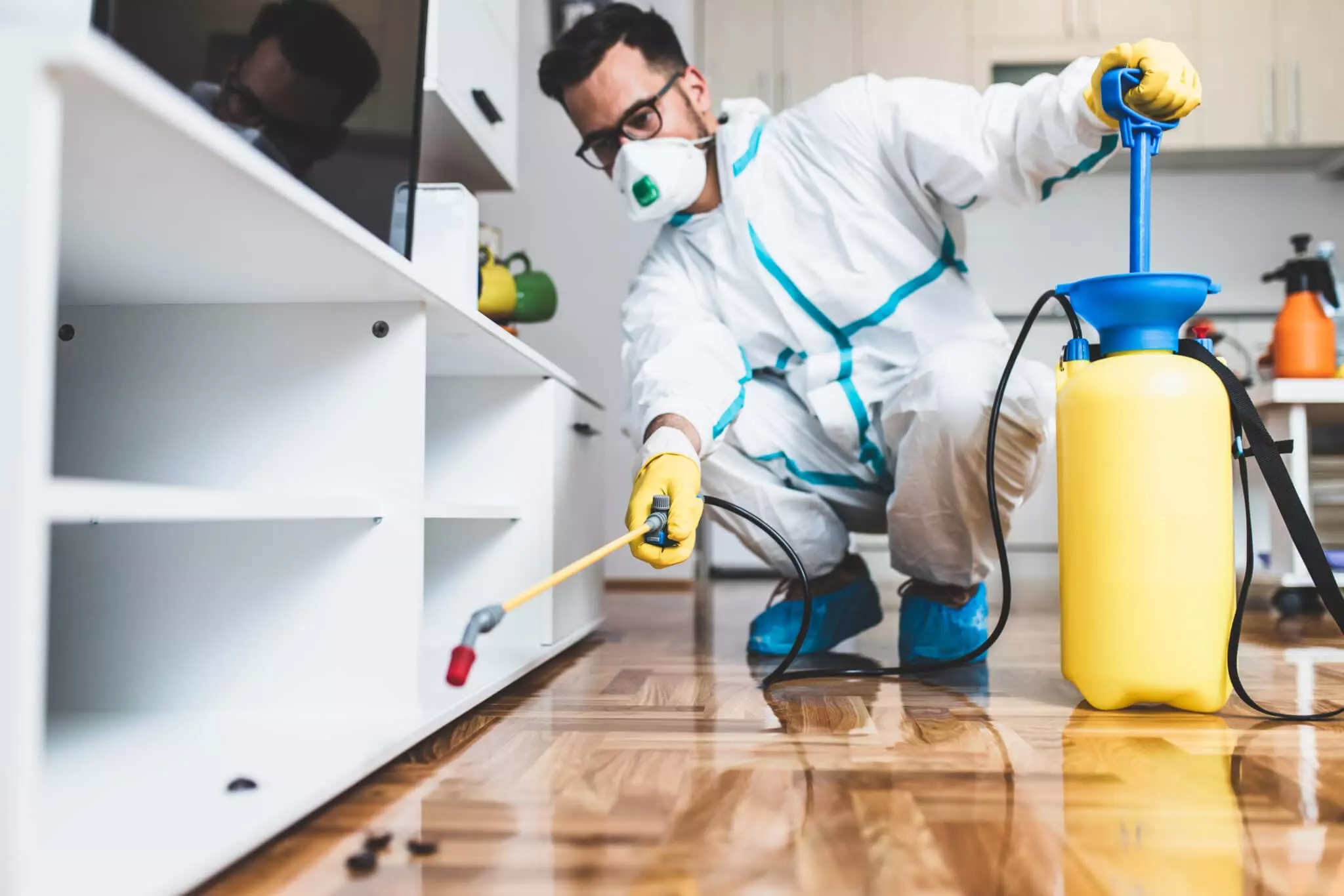Choose professional Pest Control for your home and keep pests away.
Eco-Friendly Insect Control Approaches for Taking Care Of Wildlife in Urban Areas
Urban areas often find themselves at the intersection of human task and wild animals, leading to unique difficulties in parasite monitoring. Green approaches emphasize sustainable coexistence, employing methods such as environment alteration and all-natural repellents to minimize human-wildlife disputes. These approaches not just secure the setting yet likewise improve area engagement in wildlife management. As metropolitan populaces remain to expand, recognizing the characteristics of wild animals communications becomes increasingly critical. What cutting-edge approaches can be carried out to ensure both ecological balance and urban safety? Exploring this concern exposes a compelling landscape of prospective options.
Understanding Urban Wild Animals Characteristics
Comprehending Urban Wild animals Characteristics is vital for establishing efficient and eco-friendly insect control strategies. Urban locations are increasingly ending up being environments for numerous wildlife types, driven by factors such as habitat fragmentation, food schedule, and human encroachment. Acknowledging these dynamics permits a nuanced strategy to pest administration that lines up with environmental concepts.
Urban wild animals usually consists of species such as raccoons, squirrels, and birds, which adapt to city environments, locating particular niches in green rooms, parks, and also suburbs. Their visibility can lead to conflicts with people, particularly when they manipulate personnels for food and shelter. Recognizing the actions and ecological functions of these types educates strategies that reduce adverse communications while advertising biodiversity.
Furthermore, acknowledging the interdependencies within urban environments aids in identifying important locations for environment preservation and repair. This knowledge adds to the development of incorporated pest management (IPM) techniques that take into consideration the eco-friendly equilibrium, consequently minimizing reliance on harmful chemicals. By fostering conjunction between people and metropolitan wild animals, cities can produce healthier settings that profit both locals and neighborhood communities, leading the way for lasting urban living.
Natural Repellents and Deterrents
Natural repellents and deterrents offer a sustainable option to traditional pest control methods by harnessing the power of nature to keep unwanted varieties away. These environment-friendly services commonly utilize plant-based ingredients, important oils, and other normally happening substances that prevent bugs without harming the atmosphere.
One reliable all-natural repellent is peppermint oil, which is recognized to ward off rats and insects. Its solid fragrance is unpleasant to several bugs, making it a preferred selection for metropolitan setups. Vinegar and citrus peels can offer as deterrents, as their solid smells are normally unappealing to numerous wild animals.
Additionally, diatomaceous earth is an all-natural powder that can be spread out in areas prone to parasite task, efficiently dehydrating and hindering pests without posturing dangers to non-target types. Garlic sprays and neem oil are acknowledged for their capability to fend off a vast array of parasites, including both pests and larger wildlife.
Executing these natural repellents not just minimizes dependence on chemical pesticides yet likewise advertises a much healthier metropolitan ecosystem, fostering a more balanced conjunction in between human beings and wild animals. By making use of these approaches, city locations can properly take care of parasite populaces while reducing environmental effect.
Habitat Adjustment Methods
Efficient habitat adjustment strategies play an essential role in sustainable parasite monitoring by changing the setting to make it much less for pest invasions. By recognizing the eco-friendly characteristics of city areas, homeowner can carry out tactical modifications that prevent pests while advertising biodiversity.
(Misting Systems Pest Control)One primary technique entails preserving proper hygiene. This includes routine waste removal, safeguarding garbage can, and removing standing water to decrease reproducing sites for bugs and rodents. In addition, landscaping methods such as picking native plants can enhance environmental balance, giving environments for beneficial organisms while decreasing resources for parasites.
Another essential method is to secure access points in buildings. Examining and fixing fractures in structures, wall surfaces, and windows can substantially lower parasite accessibility. Furthermore, creating physical obstacles, such as fencings or plant barriers, can hinder wild animals activity into human-inhabited areas.
Integrated Insect Monitoring Practices
Structure next page upon environment adjustment methods, incorporated parasite management (IPM) practices offer an all natural technique to managing insect populations while decreasing environmental influence. IPM incorporates numerous approaches, including biological, cultural, mechanical, and chemical controls, to attain efficient bug administration.
Organic control includes the intro of all-natural killers or bloodsuckers to reduce insect populaces. Social methods, such as plant rotation and hygiene, interrupt pest life process and decrease their environments - Pest Control. Mechanical controls, like traps and barriers, provide immediate alleviation from insect stress without chemical intervention
Chemical controls are utilized as a last hotel, concentrating on targeted applications that limit damage to non-target varieties and the atmosphere. The selection of eco-friendly pesticides, when required, is essential to the IPM framework. Furthermore, keeping track of pest populaces and analyzing potential damages helps educate decision-making, making sure that interventions are prompt and efficient.
Neighborhood Participation and Education And Learning

(Pest Control Near Me)Workshops and informative sessions can gear up citizens with knowledge about indigenous varieties, environment preservation, and effective non-toxic insect monitoring techniques. Collaboration with institutions, neighborhood companies, and government firms further improves instructional outreach, making certain that essential information reaches diverse target markets.
In addition, community-led efforts, such as community clean-up days and habitat reconstruction projects, not just promote biodiversity but likewise strengthen neighborhood connections. Pest control service. By urging citizens to share their experiences and monitorings, communities can establish targeted approaches that resolve specific neighborhood parasite concerns
Incorporating feedback from homeowners right into parasite administration intends makes it possible for a more receptive and flexible approach to wildlife difficulties. Inevitably, notified and involved areas are crucial to attaining lasting success in environmentally friendly bug control, bring about much healthier urban environments that respect both human and environmental needs.

Verdict
In final thought, environment-friendly bug control approaches deal sustainable remedies for handling metropolitan wildlife. By focusing on habitat modification, utilizing natural repellents, and carrying out integrated bug administration methods, communities can cultivate a harmonious coexistence with regional fauna.